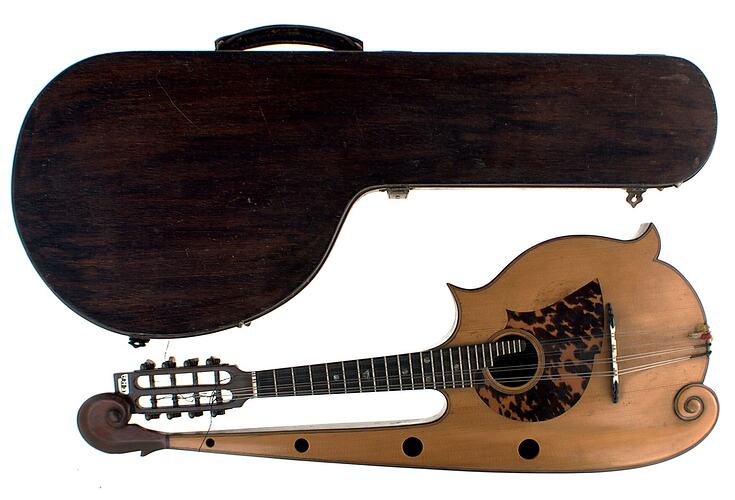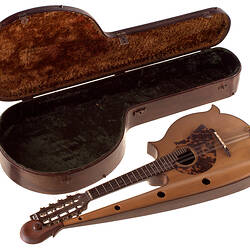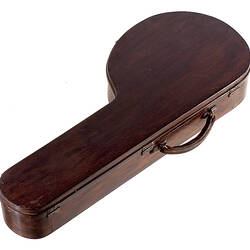Giovanni Cera's Migration:
Giovanni Cera was born on 12 December 1901 in Camporovere, in the district of Altopiano di Asiago, province Vicenza, Veneto, in Italy. After the reconstruction of Camporovere, which had been severely damaged by the Austrians during World War I, it was very difficult to find jobs. Before the War, Giovanni's father, Giovanni Maria (born 22 May 1869), had spent many years in Germany as a bricklayer/builder. Giovanni and his father migrated to Australia for political and economic reasons. They were Socialist Party sympathisers, and the rise of Fascism in Italy forced them to migrate. Giovanni arrived in Australia in April 1924 on the ship 'Principessa Giovanna' with his father. There were 105 Italian migrants from the same district of the Altopiano di Asiago on board.
When Giovanni and his father arrived in Melbourne, they boarded with Italian families in Carlton. Soon after Giovanni's father obtained employment in the construction industry. Giovanni worked at several manual jobs for a couple of years and played string instruments only at private functions, mainly for Italians. He began to play for ABC radio and for other radio stations from 1931, when he became eligible to join the union. Guerino (Rino) Cera, Giovanni's brother, followed his father and brother to Australia only a few months after their arrival. Rino was also a musician (mandolin and guitar) and played with his brother. In the months after their arrival in Australia, both father and sons worked very hard for long hours in order to save the money necessary to bring out the rest of the family: his mother and two sisters, Tranquilla and Maria. In 1925, twelve months after their arrival, Giovanni's father travelled back to Italy to bring them out.
In 1925, Giovanni married Antonietta Pangrazio at St Ignatius Catholic Church in Church Street, Richmond. Giovanni and Antonietta were engaged before his departure to Australia. The marriage was celebrated by the first Italian Jesuit, Father De Francesco. At that time this was the only church in Melbourne with an Italian priest.
Giovanni Cera's Musical Career:
Giovanni was as young as five when he began to play the mandolin and other string instruments under the tutelage of local musicians. His first instrument was a mandolin which was given to him by a woman in his town. During his teenage years he played in local bands and travelled quite extensively to nearby towns and regions, earning money for the family. His brother Rino was also an accomplished musician and played with him in Australia for many years. In about 1933, Giovanni and his brother Rino took over a reception venue located in Russell Street (site of the former police headquarters), which had been opened in 1928 by the Giovanni Battista Caneva. The club was the preferred venue for many of the Italian community's functions including dances, parties, engagements and weddings. The place was known as Club Caneva. Giovanni and Rino managed the club until the outbreak of World WII, and played at many of these functions. The venue was opened only on Saturday and Sunday. Giovanni and his wife Antonietta, lived on the club's premises. ar
Giovanni had a very successful career as a musician in Melbourne. He played for over 13 years at Mario's Restaurant, owned by Mario Viganò, in Exhibition Street, Melbourne, before and after World War II. The restaurant was frequented mainly by Australian patrons who loved Mario's food and music. Giovanni would obtain the records of popular songs from Italy and then write the music for his band. Giovanni's repertoire also included music from South America and pre-war USA. Tango was his specialty. He formed various orchestras of mainly string instruments with a piano accordion. Giovanni and his band also played at Myer department store in the afternoon (from 3 to 5pm). The music programme changed every two weeks, from Latin to Hawaiian and American. Myer would provide the costumes for the musicians according to the theme.
Giovanni also made a name for himself as musical instrument maker. Some of his instruments were sold to musicians in the United States and England. His brother Rino was also an instrument maker and a skilled musician. Giovanni learned the trade of instrument making during a two year course at the 'Arti and Mestieri' school in his hometown of Camporovere. This type of school was quite popular in Italy until the 1950s, they were set up by the government with the aim of giving young men the opportunity to learn a trade such as bricklaying, carpentry, woodworking and metal work. Most of the men who attended these schools migrated and their trade ensured that they would find a job in the country of emigration. Giovanni began making musical instruments in Australia because he could not find a good mandolin or guitar to play. His music was very much in demand in Australia from the 1930s until the 1950s. During this long period his main source of income was derived from his work as a musician.
In 1943 Giovanni composed the music for a song dedicated to Mr Arthur Calwell, a Labor Party parliamentarian who spoke out against the internment of Italians during World War II. The song 'God bless you Mr Calwell' was performed by Fanny Borsari at a gala night organised by the Italian community in honour of Mr Calwell at the Cathedral Hall, Fitzroy. A recording of the song was presented to Calwell at the function. The original record is held by Mrs Elizabeth Calwell, daughter of Arthur.
Giovanni Cera died on 22 October 1990 in Melbourne.
More Information
-
Keywords
-
Authors
-
Article types


